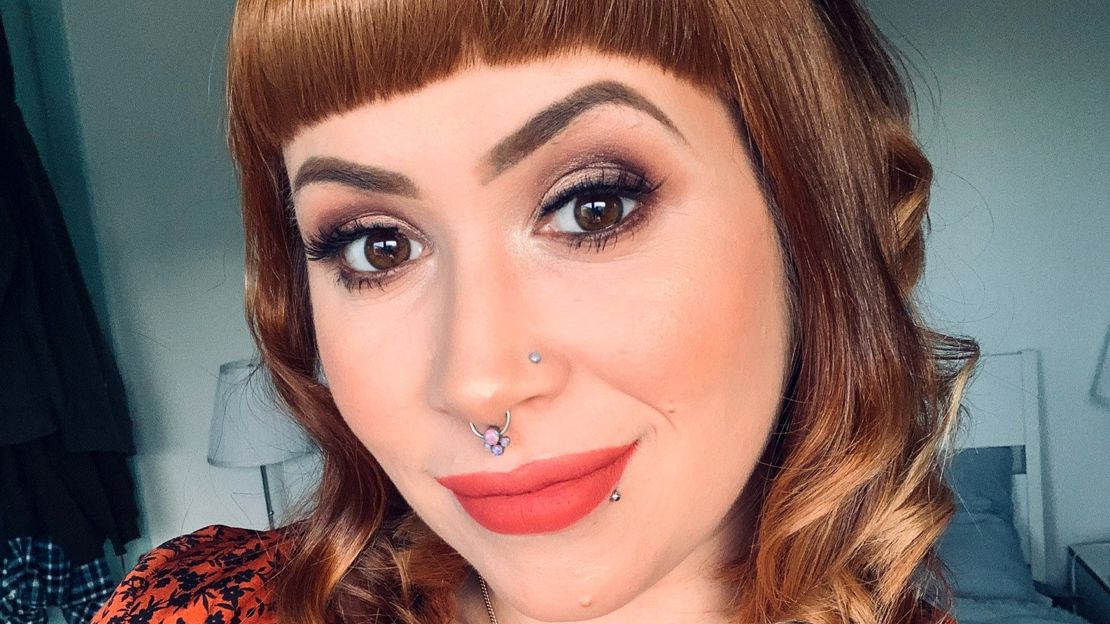From being a runner on The X Factor and Britain’s Got Talent while studying, Ayden has seen her star rise and career take off to eventually become an art director on the high-end BBC show The Nest - helped along the way by ScreenSkills.
While studying a creative course for theatre at the Royal Scottish Academy of music and drama, Ayden soon realised the skills she was learning could be transferred to the world of film and TV. So she got work as a runner on talent shows and a BBC lottery show, Secret Fortune, where she took the bold step of offering her services to the design team. Her desire was to work in the art department.
“Sure enough, the production designer, Patrick Doherty, did need some help on the pilot for that lottery show,” explains Ayden. “He then brought me back in the first series as an art department assistant. Followed by the second series as an art director.”
That was quite a transition. But Ayden was clearly proving her worth. So much so that Doherty brought her on board as art director on The Weakest Link – her first job after graduating.
She learned her new role on the job, including how the TV industry works and the way the art department is structured. Then as her experience and confidence grew, she began putting herself forward for other jobs as an assistant art director or even as an art director on smaller jobs.
But it was discovering ScreenSkills that proved decisive. She applied for a traineeship and got down to the last three but didn’t get the position. However, the production designer on the panel, Mark Leese, liked her. telephoned and offered her a job as an art department assistant on a forthcoming project. A strong partnership was born.
Ayden went on to work with Mark on several BBC series as an art department assistant, such as Shetland, Murder and The Crash, then took the step up as assistant art director, including on the fourth series of Shetland, and then as art director, most notably on the BBC/StudioLambert series The Nest.
“Having scaled up from art department assistant to art director, I knew how the roles worked and what was expected of me, which helped. But The Nest was a bigger budget and team, with lots of people above and below me, so it was undoubtedly a big challenge,” admits Ayden. This is where ScreenSkills again provided invaluable support.
It was the series’ producer, Clare Kerr, who set Ayden up on the Make a Move scheme to help her with the step up. “We filled in a form to map out my goals for the job - areas I was going to tackle like technical drawings, things I wanted to achieve and maybe needed an extra bit of guidance about while I was doing the role,” explains Ayden.
The scheme proved hugely beneficial for Ayden, as it has for many productions that pay into the High-end TV Skills Fund, which then supplies financial support to employ and train individuals into higher grades. The subsidy is flexible and can be used to cover salaries, mentoring or other expenses such as attending short courses.
Having that ScreenSkills support and the presence of Mark Leese on set really helped Ayden to feel it was a safe and supportive environment where she could push herself out of her comfort zone. “I was doing things like technical drawings and making important and pivotal decisions when it came to the sets and colours. These were decisions I’d observed others make before, but now I was making them, and was fortunately fully trusted,” she says.
However, she soon found that when you become an art director and deal with a bigger crew, it’s not only the job you’re thinking about. “It’s not just about the paint, wood and sets, but managing people and dynamics that was just as much of a challenge. You’re suddenly responsible for dealing with office matters – finding crew, hiring people, making sure everyone is happy, workflow continuing, everybody eating and drinking enough, and not getting stressed. When people are happy that’s when they produce the best work.”
To compound the stresses of the job, Ayden was six months pregnant during the shoot for The Nest, and the show was about a baby born prematurely. “So, I was designing hospital sets and getting prosthetics ordered for fake caesarean section bellies, while I was pregnant.” But in her determined and resilient way, she managed to cope.
In stressful situations like these, ScreenSkills can again provide more emotional support. Ayden says that they always checked in with her and offered support when she was stressed. ScreenSkills even provided a couple of counselling sessions to her at the start of the lockdown. “That emotional support has been invaluable” she says.
After The Nest, Ayden, who lives in Renfrewshire, gave birth to a baby girl in February and has been on maternity leave for most of this year. But she has now returned to work on the second series of the BBC drama Guilt, working alongside Leese again, for six weeks of prep, then 10 weeks of shooting in Scotland.
“Although, ironically, I’m not the art director on this. It may sound like a demotion from my last job, but myself and the designer agreed that on my first job back after maternity leave I would like to ease myself in gently. I’m still working on striking the balance between work life and home life with kids, as we do very long hours in TV. But the last two weeks (of prep) have actually been okay! It’s actually been quite nice to finish a beverage while it’s still hot - so being back at work definitely has some advantages,” she concludes, laughing.
